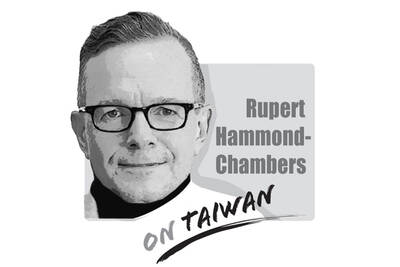Drugged with sedatives, handcuffed and wearing a bright orange prison tunic, British fraud investigator and former journalist Peter Humphrey was escorted by warders into an interrogation room filled with reporters, locked inside a steel cage and fastened to a metal “tiger chair.”
Humphrey recalls: “I was completely surrounded by officers, dazed, manacled and with cameras pointing at me through the bars. I was fighting for my life like a caged animal. It was horrifying.”
Footage from the interrogation was later artfully edited to give the appearance of a confession and broadcast on Chinese state media. While this might sound like an Orwellian show trial in Stalinist Russia, it happened in Shanghai in August 2013.
Humphrey had been accused by the People’s Republic of China (PRC) of stealing private information. Prior to the arrest, he was investigating alleged corruption at GlaxoSmithKline’s China operations. Humphrey maintains that he is innocent and was the victim of a revenge attack by a former employee of the company with high-level connections to Beijing.
The televised, forced “confession” was a propaganda coup for Chinese President Xi Jinping (習近平), who at the time was trying to shore up power following an acrimonious battle for leadership of the Chinese Communist Party (CCP). The doctored footage, which Humphrey says included distorted dubbing and subtitles, was disseminated not just within China, but also — unbelievably — to an audience in the UK.
On Monday, the British Office of Communications (Ofcom), a government-approved broadcasting watchdog, announced that it is considering sanctions against Chinese state broadcaster China Global Television Network (CGTN) in connection with its broadcast of the forced “confession.”
CGTN is the overseas arm of China Central Television (CCTV), with bureaus around the world, and regional centers in Beijing, Washington, Nairobi and London. In February, CGTN was designated a foreign mission by the US Department of State.
In addition to Humphrey’s case, CGTN’s London bureau is the subject of several other Ofcom investigations. They include the alleged breaking of impartiality rules on four occasions while covering pro-democracy demonstrations in Hong Kong in August and September last year. In 2018, a CGTN reporter was arrested at a UK Conservative Party conference after slapping a delegate in the face during an event organized by Hong Kong Watch.
CGTN follows a modus operandi similar to that of Russian state broadcaster RT, previously called Russia Today. Like RT, CGTN’s coverage promotes a relentlessly positive view of its home nation, characterizing its government as a benign force for good in the world, while systematically amplifying anti- establishment voices, negative news stories and divisive issues from the UK, EU and US.
CGTN has used its sizeable budget to aggressively poach experienced Western journalists and news anchors to boost its credibility, and impart a veneer of respectability to its output. CGTN has expanded onto YouTube and its videos regularly appear at the top of searches for China news stories.
Chinese propaganda aimed at an international audience is not limited to CGTN. China Daily, an English-language newspaper published by the CCP, is distributed internationally. It also produces a paid supplement called China Watch, which is placed in leading US papers including the New York Times, the Washington Post and the Wall Street Journal, with content designed to look like real news articles.
Taiwan has a well-known problem with Beijing-friendly “red media” such as CtiTV News and Want Want China Times Media Group, while only last week, it expelled two Chinese journalists.
It is high time that Taiwan and the rest of the democratic world pulled the plug on China’s global propaganda machine.

In the past month, two important developments are poised to equip Taiwan with expanded capabilities to play foreign policy offense in an age where Taiwan’s diplomatic space is seriously constricted by a hegemonic Beijing. Taiwan Foreign Minister Lin Chia-lung (林佳龍) led a delegation of Taiwan and US companies to the Philippines to promote trilateral economic cooperation between the three countries. Additionally, in the past two weeks, Taiwan has placed chip export controls on South Africa in an escalating standoff over the placing of its diplomatic mission in Pretoria, causing the South Africans to pause and ask for consultations to resolve
An altercation involving a 73-year-old woman and a younger person broke out on a Taipei MRT train last week, with videos of the incident going viral online, sparking wide discussions about the controversial priority seats and social norms. In the video, the elderly woman, surnamed Tseng (曾), approached a passenger in a priority seat and demanded that she get up, and after she refused, she swung her bag, hitting her on the knees and calves several times. In return, the commuter asked a nearby passenger to hold her bag, stood up and kicked Tseng, causing her to fall backward and
In December 1937, Japanese troops captured Nanjing and unleashed one of the darkest chapters of the 20th century. Over six weeks, hundreds of thousands were slaughtered and women were raped on a scale that still defies comprehension. Across Asia, the Japanese occupation left deep scars. Singapore, Malaya, the Philippines and much of China endured terror, forced labor and massacres. My own grandfather was tortured by the Japanese in Singapore. His wife, traumatized beyond recovery, lived the rest of her life in silence and breakdown. These stories are real, not abstract history. Here is the irony: Mao Zedong (毛澤東) himself once told visiting
When I reminded my 83-year-old mother on Wednesday that it was the 76th anniversary of the founding of the People’s Republic of China, she replied: “Yes, it was the day when my family was broken.” That answer captures the paradox of modern China. To most Chinese in mainland China, Oct. 1 is a day of pride — a celebration of national strength, prosperity and global stature. However, on a deeper level, it is also a reminder to many of the families shattered, the freedoms extinguished and the lives sacrificed on the road here. Seventy-six years ago, Chinese Communist leader Mao Zedong (毛澤東)